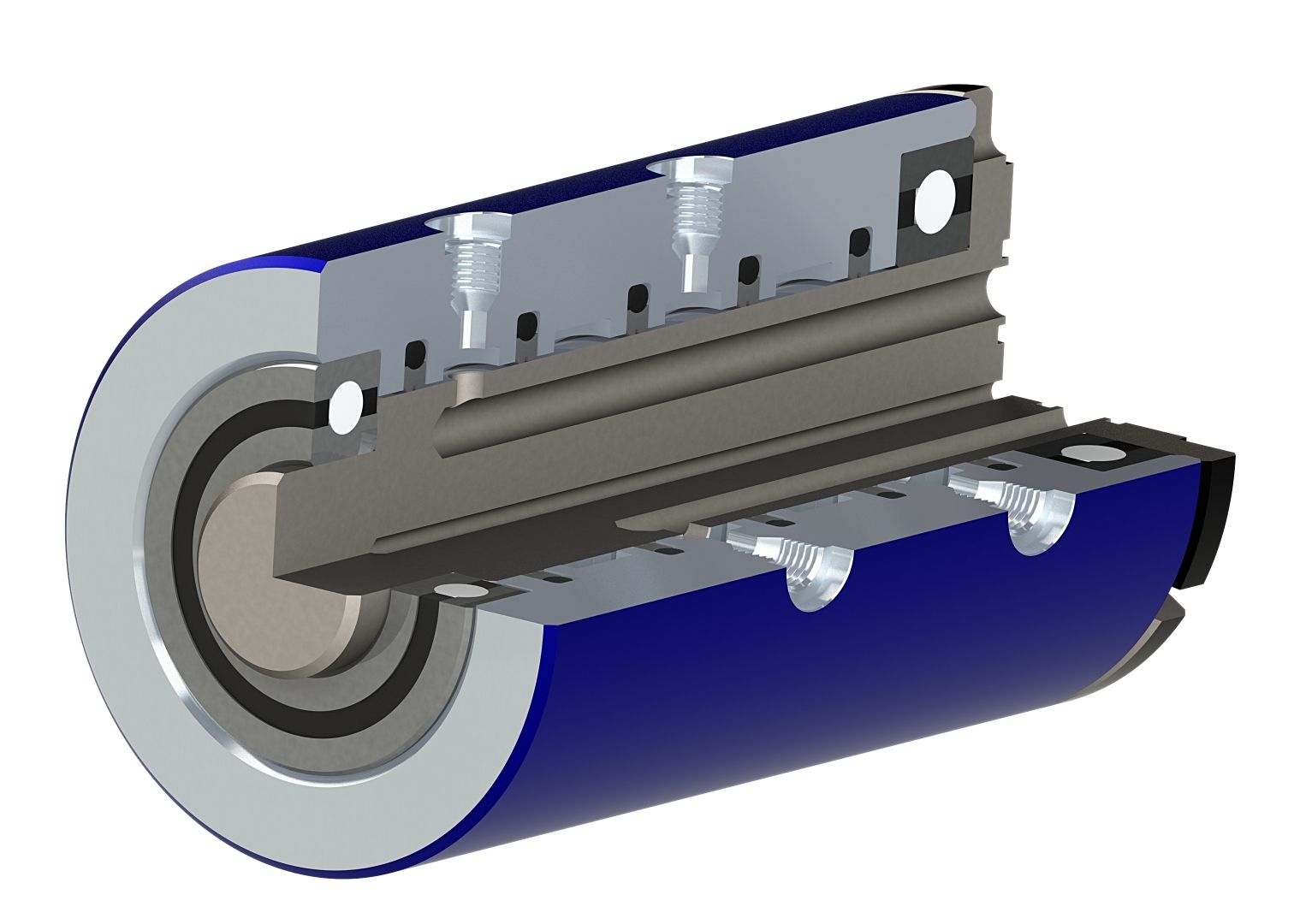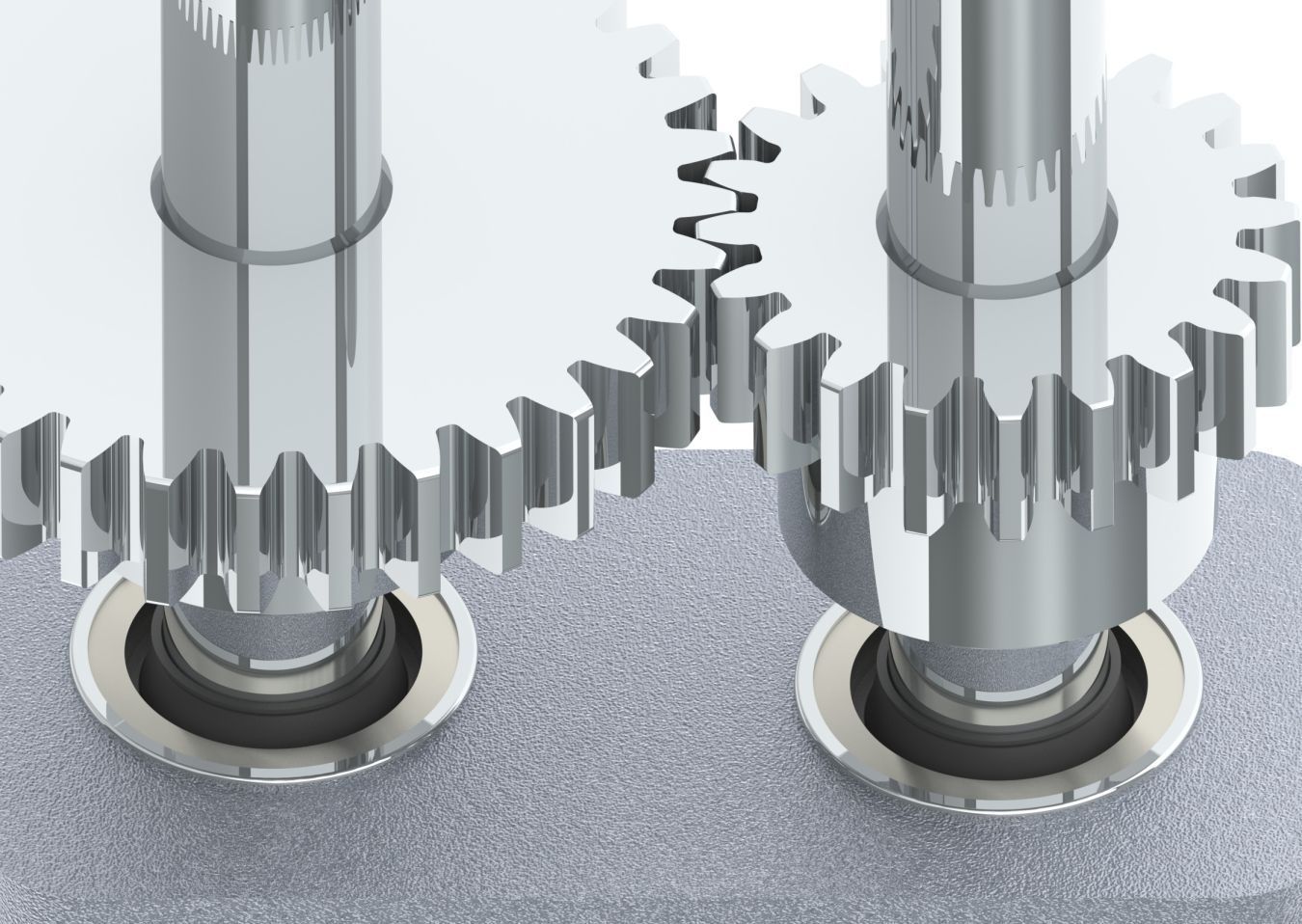Your Guide To The Pros And Cons Of PEEK Back-Up Rings
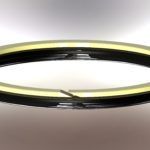
Back-up rings serve an important role in world of seals. While the design principle and construction are incredibly simple, they greatly extend the usefulness of the most common and prolific sealing device in the world: the O-ring .
Back-up rings are aptly named as they do just that: they back-up an O-ring.
Back-up rings are commonly nothing more than a ring of polymer meant to space the O-ring away from the extrusion gap in hardware. By blocking off the extrusion gap, the pressure-handling ability of an ordinary O-ring is greatly increased.
Solid or split back-up rings out of virgin PTFE can usually be found on the shelf, and are largely considered commodity items. Eclipse manufactures tens of thousands of back-up rings every year, for a wide range of industries.
While the design and functionality of a back-up ring rarely changes, the material selected can greatly complicate this simple device. Some applications require specific material properties and/or special material certifications.
Eclipse has the ability to manufacture military-spec back-up rings out of fully certified AMS 3678/1 virgin PTFE. If your application calls-out or requires a certified “MS” style back-up ring (MS27595 or MS28774), Eclipse has you covered.
We can also manufacture a back-up ring out of any of our long list of PTFE blends, thermoplastic elastomers, and urethanes. But other than virgin PTFE, the most common custom material for back-up rings Eclipse uses is PEEK (polyether ether ketone).
In certain applications, PEEK has some distinct advantages as a back-up ring material. But with these advantages comes some potential issues.
Read on if switching from a PTFE to a PEEK back-up ring sounds like an enticing proposition to see what you need to consider before making the change.
The Advantages of PEEK Back-Up Rings
In higher pressure applications, or when an O-ring must contend with a larger-than-recommended extrusion gap, a virgin PTFE back-up ring might not be enough to prevent extrusion.
If you’re experiencing sealing failures due to O-ring and back-up extrusion, it’s probably time to switch to a higher modulus back-up ring material.
Other than virgin PTFE, other common back-up materials that are more extrusion resistant are nylon and thermoplastic elastomers. Both materials will offer much better performance in terms of ultimate pressure handling when compared to virgin PTFE.
However, these materials present some limitations. nylon and thermoplastic elastomer both have an upper temperature limit of around 250°F, and might see reduced mechanical properties at around 200°F.
Diminished extrusion resistance means tighter extrusion gaps will be needed, something which isn’t always possible or desired. And if the application needs to operate in this temperature range, an alternative back-up ring material is needed.
Eclipse’s EP033 virgin PEEK has become a go-to for applications requiring a high-modulus and high-temperature plastic. With a durometer around 85 Shore D and an upper temperature rating of close to 500°F, PEEK is an optimum material for high performance back-up rings.
Industries such as oil and gas require demanding working conditions. Eclipse supplies PEEK back-up rings used in multiple down-hole drilling applications where pressures can be up to 5,000 psi and temperatures often approach 350°F.
PEEK is an optimum performer in these situations. It can function at the same level as a metallic back-up ring, without the risk of metal-to-metal contact which could potentially gall the hardware.
The Potential Issues in Using a PEEK Back-Up Ring
Eclipse often gets requests for PEEK back-ups from customers experiencing failures with standard dash number PTFE back-up rings.
Unfortunately, making a PEEK back-up to the standard “MS” PTFE dash number dimensions is in most cases a bad idea.
A standard PTFE size back-up made out of PEEK won’t work at all in a standard size static O-ring groove. It will prevent the hardware from assembling.
Dimensions for the standard dash sizes count on the PTFE being able to deform or distort to fit the hardware. If the back-up ring is slightly too big for the hardware it will “squish” into place without much effort.
Being a much higher modulus plastic, PEEK will not cold flow like PTFE. A ring wall even 0.001” oversized from the hardware cross-section will prevent hardware assembly or create assembly issues. The back-up ring needs to be correctly sized for clearance in the hardware.
If your application requires a PEEK back-up, we’ll need the rod or bore diameter, groove diameter, and groove width to properly design the back-up ring for optimal performance. Due to the wide variety of O-ring gland standards and specifications, simply asking for a PEEK back-up to use with an O-ring dash size isn’t sufficient information.
Another potential problem with split PEEK back-up rings is O-ring nibbling. This is where the split in the PEEK back-up will start eating away at the O-ring.
Pressure cycling or dynamic motion can cause the split to open and close slightly. The O-ring can protrude into the split, and be nibbled away by the hard, sharp corners. This typically is not a concern with PTFE and softer material back-ups.
One remedy for O-ring nibbling is to place a PTFE back-up ring between the PEEK back-up and the O-ring. The PTFE will protect the O-Ring from the split in the PEEK and eliminate nibbling. This will require extra axial gland width to accommodate the two back-up rings.
An additional consideration before ordering a PEEK back-up ring is certain installation situations for solid glands. A split PTFE back-up — except for the smallest diameters — likely will be able to be stretched or compressed to fit into almost any solid gland.
For example, it will not be possible to open or expand a PEEK back-up enough to fit directly into a solid piston gland without fracturing it. A PEEK back-up will need to be looped around the end of the hardware or fed in one end at a time in a spiral fashion, much like a metal piston ring.
Lastly, you should be sure to consider the cost before making this switch. Compared to an off-the-shelf PTFE back-up ring, a custom PEEK back-up will cost more.
A PEEK back-up needs to be designed to fit the hardware, so stocking standard dash numbers isn’t possible. Each job will need to be made to order and is subject to standard lead-times and minimums.
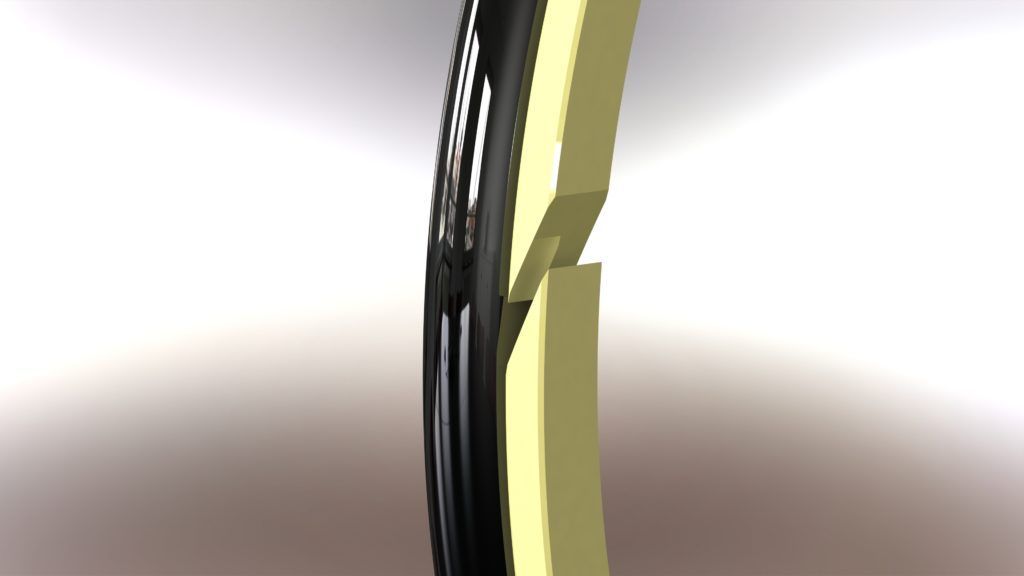
Contact Eclipse for All Your PEEK Back-Up Ring Needs
If your application is seeing failures or extrusion using standard PTFE back-up rings, PEEK might be just the alternative material you need. Eclipse is here to design and manufacture any of your back-up ring needs.
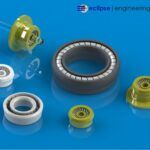
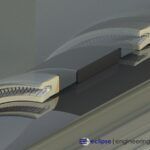
PRODUCTS
INDUSTRIES
SUBSCRIBE TO OUR NEWSLETTER
Sign up for our newsletter and receive resources about seals, bearings, and shapes delivered directly to your inbox!

